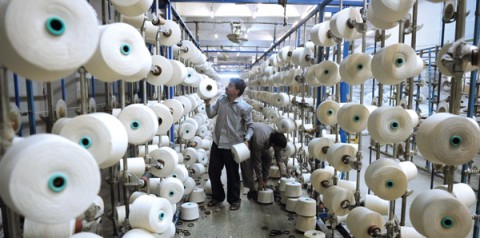
International The News - 15 April 2019
China to extend duty free access on 313 more tariff lines
China has agreed in principle to extend duty free access on additional 313 tariff lines under the proposed second phase of the China Pakistan Free Trade Agreement (CPFTA), top official sources confirmed to The News, Sunday.
This second phase of CPFTA is expected to become operational from July 1, 2019. Both sides have firmed up details of CPFTA-II, which Prime Minister Imran Khan is going to sign during his upcoming visit to China by end of the current month. A high-powered delegation of Pakistan visited Beijing and finalised modalities for the second phase of CPFTA. Top officials are tight-lipped about the subject.
Prime Minister’s Adviser on Commerce Abdul Razak Dawood will brief the prime minister and the cabinet after which details will be shared with the media. It is expected that the cabinet will approve the revised CPFTA and the new agreement will become effective from the financial year 2019-20.
Pakistan has also agreed to provide incentives to China under the 2nd phase of CPFTA, which might take more time to become effective. Pakistan and China had signed the Free Trade Agreement (FTA) in November 2006 during the Musharraf regime and its first phase was implemented for five years with effect from July 1, 2007. The first phase of FTA ended on 2012. Pakistan largely remained in disadvantageous position because of the first FTA.
The Pak-China Agreement in Goods was signed on November 24, 2006 and implemented from 1st July 2007. The agreement envisaged two phases. Under Phase-I, Pakistan reduced tariffs to zero duty on 2,423 tariff lines, whereas China reduced duty to zero on 2,681 tariff lines. The agreement in Services was signed on 21st February 2009 and the first phase got implemented from 2007-2012.
Post CPFTA, the bilateral trade went up from $4.777 billion in 2007-8 to $16.597 billion, with Pak exports and imports at $1.463 billion and $15.143 billion respectively.
China has FTA with Chile, New Zealand, Singapore, Peru, Costa Rica, and ASEAN etc. When Asean-China FTA went into effect in 2010, Pakistan registered preference erosion on tariff lines that amounted to 79 percent of its export volume to China. The main tariff lines include cotton yarn, garments, leather and fish.
China granted New Zealand 94% of tariff lines at zero % duty, with Malaysia 94% of tariff lines at zero % duty, Indonesia 93% of tariff lines at zero % duty, Thailand 93% of tariff lines at zero % duty, Philippines 93% of tariff lines at zero % duty and Pakistan only around 35% of the tariff lines at zero % duty.
Pakistan could only export in 253 tariff lines, where average export value was $500 or more, which is around 3.3% of the total tariff lines (7550). Pakistan mainly exported raw materials and intermediate products such as cotton yarn, woven fabric, grey fabric etc. Value added products were missing.
Pakistan proposed Tariff Reduction Modality (TRM) on 80 percent tariff lines on the date of entry into force of the 2nd phase of CPFTA. Islamabad had proposed no reduction on 20 percent tariff lines since the date of entry into force of 2nd phase of CPFTA.
If Pakistan is granted concession equivalent to Asean in top 20 products of its priority list, its exports to China would jump up by $257 million. Keeping in view the second scenario, it is estimated that if Pakistan is granted complete liberalization by China, Islamabad’s exports to China could go up by $542 million on annual basis.
Under the second category, Pakistan has asked for 10 percent tariff lines on elimination of products’ tariff to zero within 5 years since the date of entry into force of the 2nd Phase of CPFTA. In the third category, Islamabad has proposed elimination of products’ tariff on 30 percent tariff lines to zero within 5 years starting from 11th Year of entry into force of the 2nd Phase of CPFTA.
Islamabad proposed no reduction on 20 percent tariff lines since the date of entry into force of the 2nd phase of CPFTA. However, China proposed elimination of products tariff on 70 percent lines to zero, elimination of products’ tariff on 10 percent lines to zero within 5 years, elimination of products’ on 10 percent tariff lines to zero within 10 years and no reduction on last and fourth category of 10 percent tariff lines since the date entry into force of the 2nd phase of CPFTA.
The possible cost for Pakistan will be reduction in Regulatory Duty (RD) collection to the tune of around Rs300 million, reset the base year at applied MFN rate in 2017 which is lower than the MFN rates in 2006-7, yarn is in category II where FTA rate and MFN rate are both at 5%. If category II is liberalized, 46 tariff lines of yarn will lose protection. As a consequence of CPFTA, Pakistan will increase output in extraction, textiles and processed food, while there will be a negative impact on light manufacturing, leather and meat.